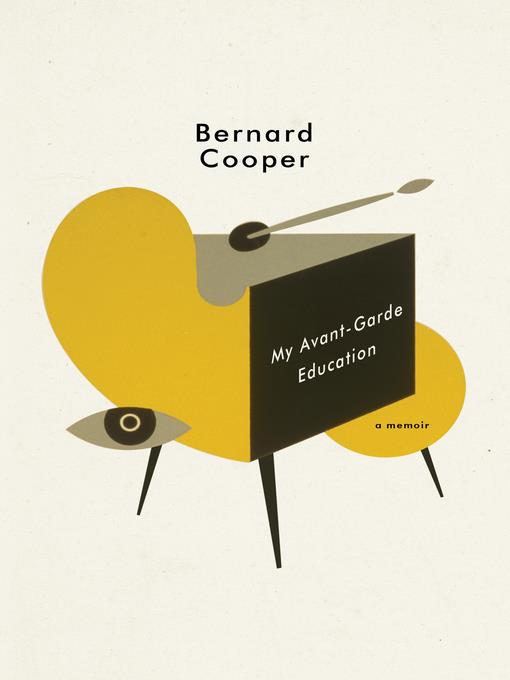
My Avant-Garde Education
A Memoir
- اطلاعات
- نقد و بررسی
- دیدگاه کاربران
نقد و بررسی

October 13, 2014
In this lively memoir, art critic and writer Cooper (The Bill from My Father), winner of the PEN/Hemingway award, retraces his youth, up to and including the period of his intellectual awakening during the heyday of conceptual art, and vividly recalls his experiences as a son, brother, student, and closeted young gay man. Alternately funny and touching, the book chronicles Cooper’s adolescence in 1960s Los Angeles, including the moment he fell in love with pop art in his middle school library, and his young adulthood in New York, where he studied at the School of Visual Arts in New York City, as well as the years he spent studying under the likes of Allan Kaprow and the poet and visual artist Emmett Williams at CalArts. Throughout, Cooper draws interesting connections between his suppressed sexuality and the period’s radical reexamination of the art object, observing, “The stronger and more tangible my longing for men, the more adamantly I crusaded for art’s dematerialization.” Offbeat characters and comic incidents richly animate Cooper’s narrative, as do his recollections of compelling seminars and performance pieces at CalArts. Toward the end of the memoir, short chapters offer a glimpse into his career as an art critic and writer, as well as the losses he suffered during the AIDS epidemic. Readers interested in conceptualism will especially value these personal reflections during such a critical moment in the recent history of art. Agent: Steven Barclay, Steven Barclay Agency.

November 1, 2014
PEN/Hemingway Award winner Cooper (The Bill from My Father: A Memoir, 2006, etc.) returns with a memoir/essay collection (some previously published) that chronicles his early interest in pop art and charts where that interest has taken him.It began in the author's junior high school library (in the early 1960s) when a Life magazine piece about pop art caught his fancy. He tore it out, and his adult life began. Cooper tells us how he pursued this growing obsession in local bookstores, watched a TV art teacher (Jon Gnagy) and eventually realized that art "didn't have to be somber and lofty; it could be as laughable and blunt as a pratfall." The author's interests-and his creations-puzzled his parents, but he persisted. At about the same time, Cooper was also realizing he was homosexual, an orientation he had to conceal fiercely during his youth. He dated women, but he yearned for men. He shares memories of his parents, of his school days (experiencing a gym teacher who paddled, learning about the JFK assassination from that same teacher), his search for technique, and his years as a student at CalArts, which opened its doors just at the time he was ready to walk through them. Cooper writes fondly of some instructors at the school, and he notes how he began to realize that he had talents for writing, as well. An art teacher told him, "[s]ounds like you're ready to write." And so he did: He spent some years as an art critic and a few as a writing instructor. Cooper also deals with crises in his life, including the death of his mother and the grim arrival of AIDS in his world. His account of the suffering of his partner is one of the most wrenching sections, and he concludes with a brief passage about his chronic insomnia. Throughout, his sentences elicit laughs, gasps and tears. An unconventional narrative that focuses on sharp, piercing moments.
COPYRIGHT(2014) Kirkus Reviews, ALL RIGHTS RESERVED.

January 1, 2015
Gay memoirist Cooper (Truth Serum, 1996; The Bill from My Father, 2006) was a junior-high student when he conceived a love of art. Conceived is putting it mildly. It's a wonder I didn't erupt with sparks, Cooper says. It was pop art, with its seeming veneration for the manufactured mundane, that lit Cooper's fuse, but by the time he enrolled at the brand-new California Institute of the Arts, he'd moved on to conceptual art, which dispensed with art as anything that lasts. His amusing, affectionate, unapologetic recollection of his art-student career occupies most of this book; five much shorter, more or less related pieces fill it out. Of those, the most substantial recalls the dying of his partner of 20 years, whose HIV-positivity had finally progressed to AIDS. Others vary from a possibly nauseatingthough sober and self-contained on Cooper's partexposition on Uses of the Ghoulish in art to the high irony of The Insomniac Manifesto, which rails against sleep as a revolutionary art movement's screed might against the styles that precede it.(Reprinted with permission of Booklist, copyright 2015, American Library Association.)




دیدگاه کاربران